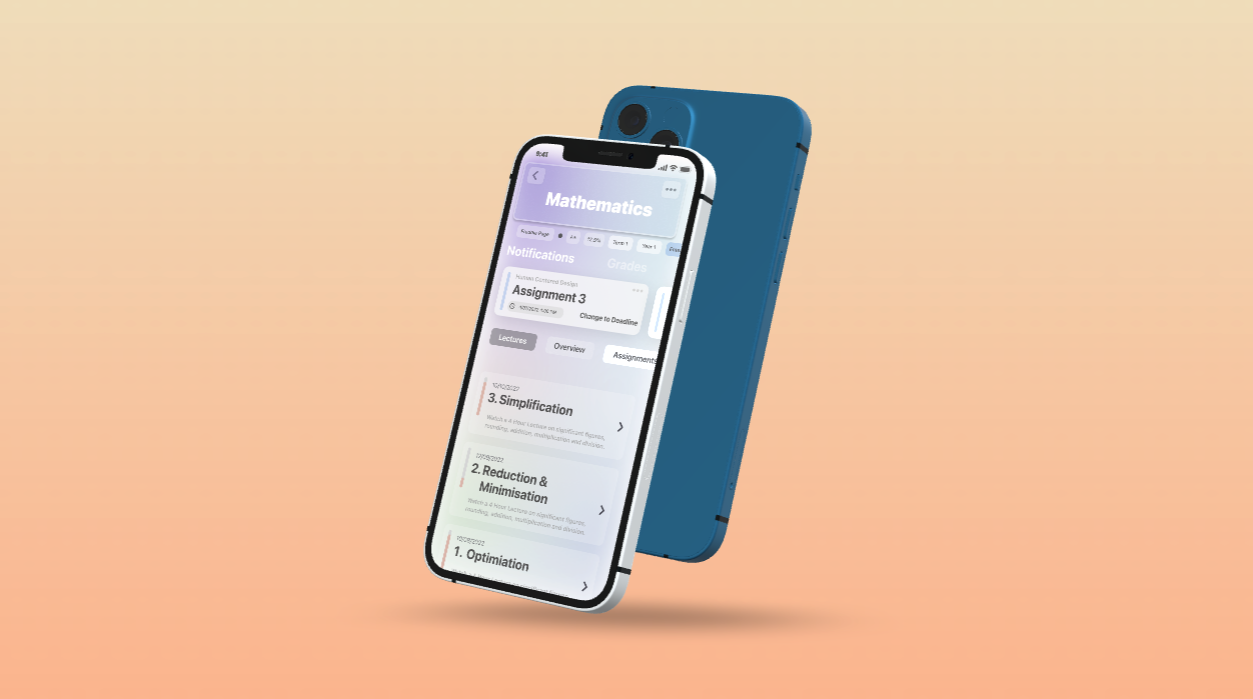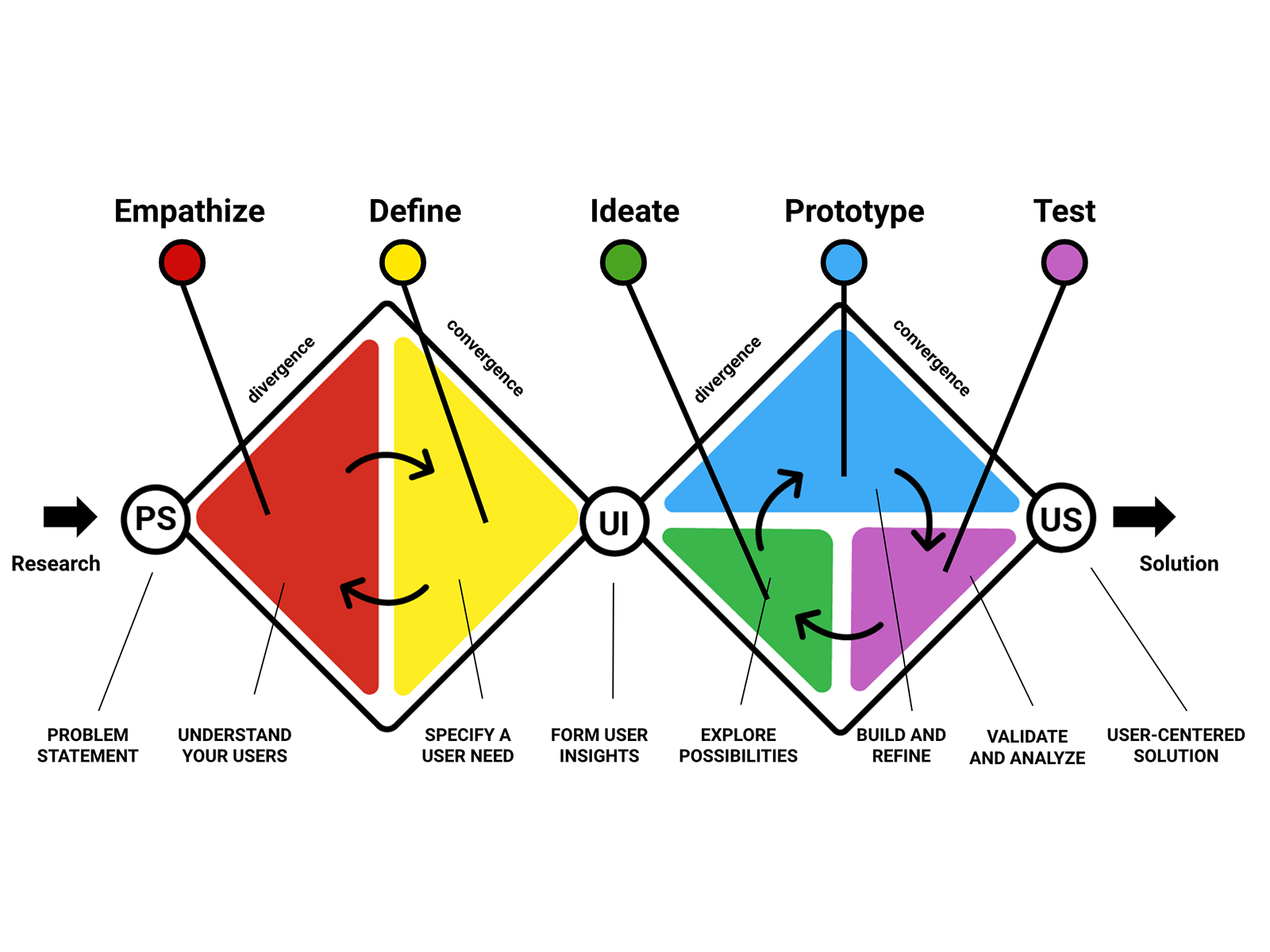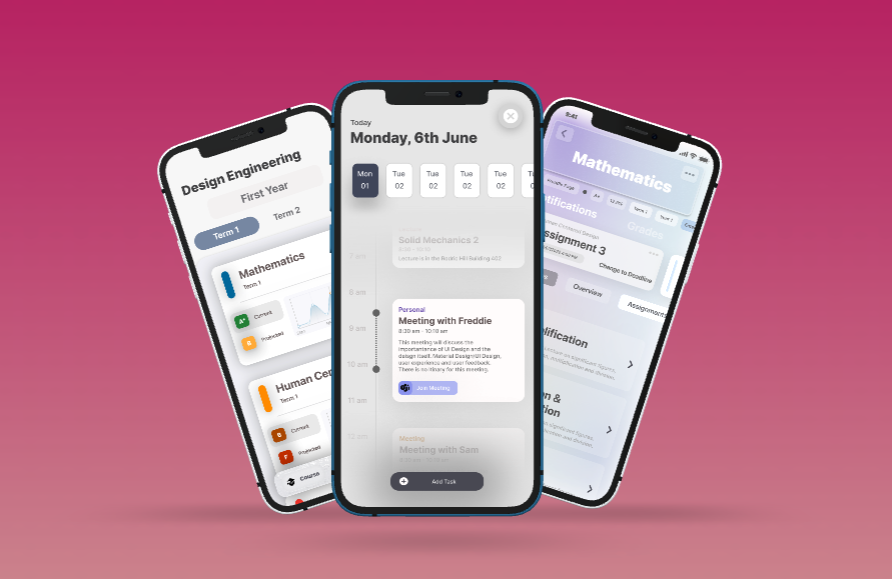An Overview
As a first-year student, I was approached for a rare opportunity to redesign and partially implement the grading and student content platform for the Dyson School of Design Engineering as an Imperial College Research Opportunity. This was a challenging and rewarding experience that allowed me to apply my knowledge and skills in a real-world setting.
I independently project managed and designed a database to efficiently store data using a prototype cloud realtime database using google authentication protocol and Microsoft Verification. I also pitched an effective solution for efficient read and writes to the platform. I conducted research and interviewed students to gather feedback and insights on their needs and wants, and used this information to design and code an ergonomic and intuitive full-stack student-faced app using the database.
The new platform dramatically improved student access to data and better visualized their grades, which were previously inaccessible to students. The platform is available in responsive iOS, android and web-app applications, with real-time updating data. This allowed students to access their grades and other information from anywhere, at any time.
However, due to the security nature of the project, I am unable to share specifics on the database structure especially as its still in development. But I can assure you that all the necessary security measures are in place to ensure the protection of the data. I am extremely proud of the results of this project, and I am excited to continue to develop my skills and contribute to similar projects in the future. I believe that this project demonstrates Imperial's commitment to innovation and to providing students with the best possible experience. The new platform is a great example of how Imperial stands out as an innovative university, and I am proud to have been a part of making it happen.

Project Brief
The goal of this project was to deliver a cross-platform software package for students to ultimately plan, improve, develop, and reflect on their study practice. The platform was developed in multiple phases to meet the optimal requirements and offer an easy transition and implementation. The students had an intuitive medium to retrieve and interact with desired, relevant and processable data that fosters good study skill practice, positive well-being attitude, and reflection on learning. The interactions with the platform were frequent but brief and informative.
The platform offered multi-layer programs that would have allowed greater accessibility of data with an improved data set that was previously inaccessible or difficult to achieve. The structure would have allowed the interconnection of data to provide the users with greater insight into their own study practice and offered useful and actionable feedback, based on prior comparable feedback. This was achieved by an aggregation of data such as the collection of marks, feedback on modules, student confidence and success in topics, in addition to course data like course structure, learning outcomes, and building on previous years to better predict ways to help improve and make the student’s education more efficient.
The platform would have facilitated a means to present the user with their current progress in modules, year, and equivalent, a suggested revision schedule to aid in time management, actionable and relevant feedback, upcoming exams and to be able to engage in learning outcomes. The aim of the platform was to build upon a modular foundation, facilitating the scaling of the project to take on additional functions to be used within the school and branching out.
- Deliver a cross-platform software package for students to plan, improve, develop and reflect on their study practice
- Provide an intuitive medium for students to retrieve and interact with relevant data
- Offer multi-layer programs for greater accessibility of data and improved data set
- Allow interconnection of data to provide users with greater insight into their own study practice
- Facilitate a means to present the user with their current progress, revision schedule, and feedback
- Build upon a modular foundation for scaling the project and taking on additional functions within the school and beyond.
Feature Set
Time management:
- Track time in real-time and submit to the app
- Schedule revision slots, integrated with calendar
- See representative revision time, share schedules with other students
- Allocate time for different activities and request help from lecturers
- See upcoming workload and access useful notes from past students
Grade centre:
- Localise information with grades and input grades into the system
- Visually see weighting of subjects and exams
- See weighting of project work, coursework and exams throughout the year
- Localise feedback of exams and coursework
Feedback and Improvements:
- Easily find and search for feedback
- Highlight, group and tally key points for areas of improvement
- Show relevant feedback when approaching exams or coursework
The platform will help students manage their time, track their grades and receive feedback to improve their study practice. It will be integrated with calendar, share schedules and have the ability to request help from lecturers. It will also give insight on weighting of subjects, exams and coursework and provide useful feedback to reflect on their performance.

Background
The need for a platform that helps students plan, improve, develop and reflect on their study practice has always been a struggle to manage. The education system is constantly evolving and students are expected to manage their time effectively, stay on top of their grades and receive feedback to improve their study practice. However, many students struggle with time management, lack of visibility into their grades and lack of access to useful feedback.
This project aims to address these issues by creating a cross-platform software package that will help students manage their time, track their grades and receive feedback to improve their study practice. The platform will be developed in multiple phases to meet optimal requirements and offer an easy transition and implementation. It is available in responsive iOS, android and web-app applications, with real-time updating data.
Research has shown that students who have a clear study schedule and are able to track their progress tend to even out their workload over their terms better. Additionally, students who receive regular feedback on their performance are more likely to reflect on their study practices and make improvements. The platform provides an intuitive medium for students to retrieve and interact with relevant and processable data that fosters good study skill practice, positive well-being attitude and reflection on learning.
The platform offers multi-layer programs that will allow greater accessibility of data with an improved data set that was previously inaccessible or difficult to achieve. The structure allows the interconnection of data to provide the users with greater insight into their own study practice and offer useful and actionable feedback, based on prior comparable feedback.
Project management
In addition to addressing the needs of students, it was crucial for the project to be well-managed in order to meet the deadline. As a solo project, effective project management systems were used to ensure that the project was completed on time. This included tracking sprints using KANBAN and gantt charts, as well as managing dependencies with parallel projects running simultaneously. This approach allowed for a clear overview of the project's progress and helped to identify any potential delays or roadblocks early on. By using these project management techniques, the project was completed on schedule ready for a prototype to present to the facilitators allowing the project to be continued after me.
